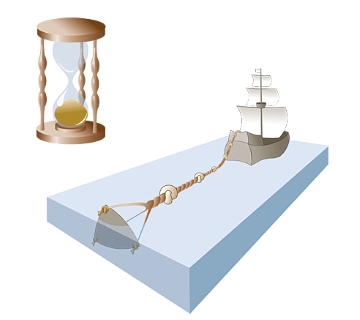730424_Marine Lingo_360 px width.jpg

Sailors used to estimate speed by letting out a rope with knots tied at set intervals and record the number of knots let out over a given period of time. Credit: NOAA
In a classic Jules Verne novel, the submarine Nautilus travels “20,000 leagues under the sea.” You might think that “20,000 leagues” indicated the sub’s depth. But you’d need a really deep ocean for that: a league is three miles, so 20,000 leagues is 60,000 miles. The title tells us how far the Nautilus traveled through the oceans.
Over the centuries, sailors and mapmakers created new units of measure, with new words to describe them, for plying the world’s oceans. Some of the words have been heaved overboard, but some are still in use.
One of the lesser-used units is the fathom, which does indicate depth. It comes from a word in Old English that means “outstretched arms.” That’s because a fathom originally was based on the span of a man’s fully spread arms. Eventually, its length was set at six feet. So the deepest point in the ocean is 6,000 fathoms down.
One unit that’s still in common use is the nautical mile—1.15 land-based miles. It marks the size of one minute of latitude—the location north or south of the equator.
And it’s the basis for the word knot: one knot is one nautical mile per hour. It originated in the 17th century. Sailors estimated their speed by throwing out a piece of wood attached to a rope. Knots were tied in the rope at specific lengths. Sailors counted the number of knots that spooled out over a given time—a knotty way to measure speed.

